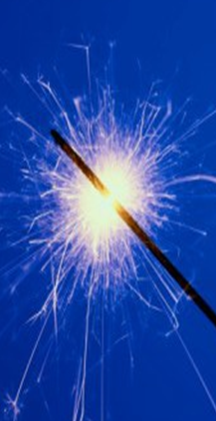As we are about to celebrate the 2013 Fourth of July, Lapin Law Offices hopes everyone has a happy and safe celebration of our nation’s independence. The most common way people celebrate the July 4th is by watching or lighting fireworks. Fireworks can be extremely dangerous and cause numerous injuries each year.
FIREWORKS SAFETY
The United States Consumer Product Safety Commission (CPSC), in its 2012 Fireworks Annual Report (Fireworks-Related Deaths, Emergency Department-Treated Injuries, and Enforcement Activities During 2012) found the following:
- CPSC staff received reports of six non-occupational fireworks-related deaths during 2012 (reporting of fireworks-related deaths for 2012 is not complete, and the number of deaths in 2012 should be considered a minimum).
- Fireworks were involved in an estimated 8,700 injuries treated in U.S. hospital emergency departments during calendar year 2012.
- An estimated 5,200 fireworks-related injuries (were treated in U.S. hospital emergency departments during the one-month special study period between June 22, 2012 and July 22, 2012 (95 percent confidence interval 3,600–6,800).
- There is not a statistically significant trend in estimated emergency department-treated injuries from 1997 to 2012.
- Of the fireworks-related injuries sustained, 74% were to males, and 26% were to females.
- Children younger than 15 years of age accounted for approximately 30% of the estimated 2012 injuries.
- 46% of the estimated emergency department-treated, fireworks-related injuries were to individuals younger than 20 years of age.
- There were an estimated 1,200 emergency department-treated injuries associated with firecrackers.
- 31% were associated with small firecrackers;
- 19% with illegal firecrackers; and
- 50% with firecrackers for which there was no specific information.
- There were an estimated 600 emergency department-treated injuries associated with sparklers and 400 with bottle rockets.
- The parts of the body most often injured:
- Hands and fingers: 41%;
- Head, face, and ears: 19%;
- Legs: 13%; and
- Eyes: 12%.
Read the full report: United States Consumer Product Safety Commission (CPSC), 2012 Fireworks Annual Report – Fireworks-Related Deaths, Emergency Department-Treated Injuries, and Enforcement Activities During 2012.
The CSPC has a Fireworks Injuries Infographic, which contains information from this 2012 Report. Click here toview the Infographic. Source: http://www.cpsc.gov/onsafety/wp-content/uploads/Fireworks-Infographic-2013_BLOG.jpg
FIREWORKS SAFETY
 Because of the dangers involved in fireworks it is important to do everything you can do to ensure your own as well as other people’s safety. Here are some tips to prevent fireworks injuries:
Because of the dangers involved in fireworks it is important to do everything you can do to ensure your own as well as other people’s safety. Here are some tips to prevent fireworks injuries:
- Alcohol and fireworks do not mix.
- Always supervise anyone under the age of 19 who is lighting fireworks;
- Choose fireworks that are age appropriate. Young children should never handle any fireworks, including sparklers.
- Consider attending one of the many free public shows available;
- Do not allow running or horseplay near fireworks;
- Do not try to relight duds.
- Fireworks should only be used outdoors.
- Follow the manufacturer’s instructions for lighting fireworks.
- Have a first aid kit nearby.
- Have, at the very least, a bucket of water available and a garden hose ready to go.
- Keep a safe distance once a firework is lit.
- Never light fireworks in containers.
- Only light off legal fireworks;
- Only light one firework at a time.
- Report illegal explosives to the fire or police department.
- Wait at least 20 minutes before handling used fireworks or duds before soaking in water and disposing; Plan your show to avoid having fireworks come down on people, houses or cars.
- Wear close fitting clothes and sturdy shoes or sneakers.
- Wear safety glasses whenever using fireworks.
- For sparklers:
- Always remain standing while using sparklers;
- Never hold a child in your arms while using sparklers;
- Never hold, or light, more than one sparkler at a time;
- Never throw sparklers;
- Sparkler wire and stick remain hot long after the flame has gone out so be sure to drop
- spent sparklers in a bucket of water; and
- Teach children not to wave sparklers, or run, while holding sparklers.
Here are some links to some firework safety videos:
- CSPC: Un-Spark-Tacular Celebration: http://youtu.be/lWdGp9fGO5w
- CSPC: Fireworks Safety: http://youtu.be/Az0tKwbvHqw
- Fireworks Safety – The Nebraska Medical Center: http://www.youtube.com/U4sbQojNcBU
ADDITIONAL RESOURCES
- Lapin Law Offices Blog: Happy Fourth of July
- United States Consumer Product Safety Commission: Fireworks
- National Safety Council- Nebraska: Celebrate Safety
- National Council on Fireworks Safety: Home page
- Nebraska State Fire Marshal: Main page
- City of Lincoln Bureau of Fire Prevention: Fireworks Safety
CONCLUSION
Lapin Law Offices (Patrick Driver, Jill Tinnelly and myself) wishes everyone a happy and injury-free Fourth of July.


